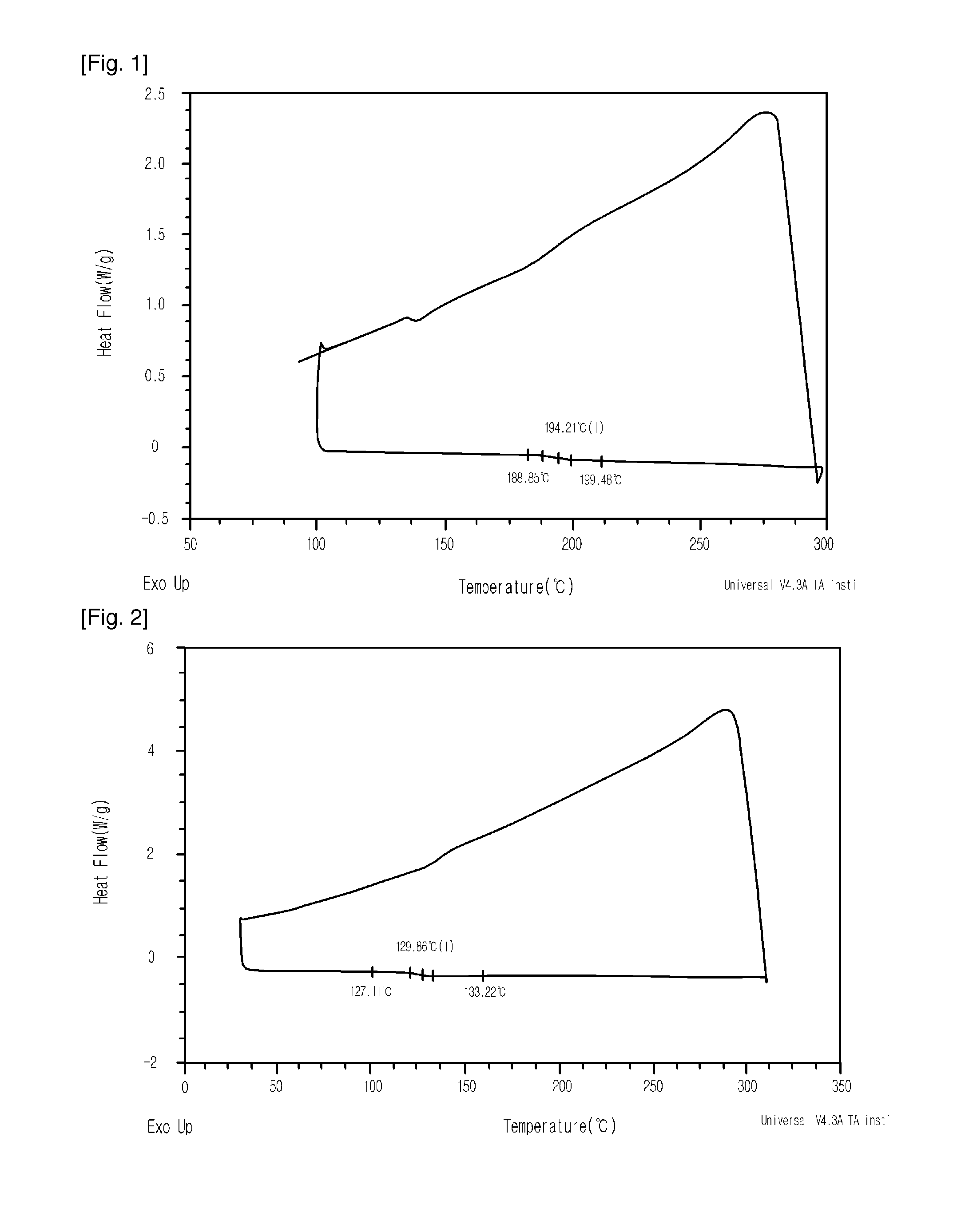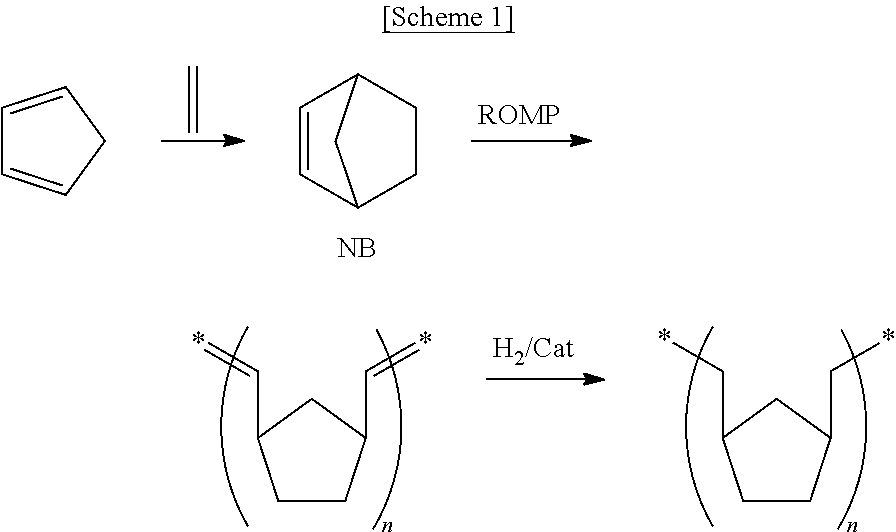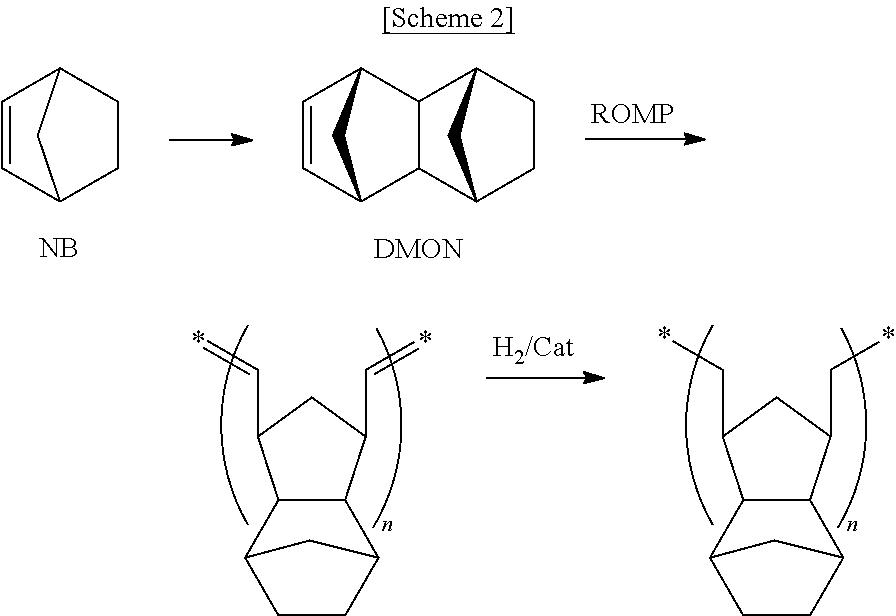Cycloolefin polymer compound and method of preparing the same
a technology of cycloolefin polymer and compound, which is applied in the field of cycloolefin polymer compound, can solve the problems of unsuitable polymerizable monomer use, undesired high cost, and inability to prepare, and achieve the effect of higher glass transition temperatur
- Summary
- Abstract
- Description
- Claims
- Application Information
AI Technical Summary
Benefits of technology
Problems solved by technology
Method used
Image
Examples
example 7
ROMP and Hydrogenation of Dicyclopentadiene-Tricyclopentadiene
[0065](1) ROMP
[0066]ROMP here was performed in the same manner as in Example 3.
[0067](2) Hydrogenation
[0068]Upon hydrogenation, a nickel-based catalyst was used instead of the ruthenium-based catalyst. Concretely, 4 hr after ROMP, a compound represented by Chemical Formula 7 (wherein M is Ni and n is 2, 29.13 mg, 113.4 μmol) and triisobutylaluminum (87.42 mg, 0.441 mmol) were dissolved in 9.5 g of cyclohexane thus forming an activated catalyst which was then added into the polymerization reactor using a syringe. In order to change the atmosphere of the polymerization reactor, hydrogen gas at 35 bar was injected. After 12 hr, hydrogen pressure was relieved and 10 ml of isopropyl alcohol was injected using a syringe. The reaction precipitate was filtered, and the polymer was washed with stirring using 40 ml of diethylether, followed by removing the solvent and then performing vacuum suction at 50° C., yielding 2.7 g of a po...
PUM
| Property | Measurement | Unit |
|---|---|---|
| temperature | aaaaa | aaaaa |
| temperature | aaaaa | aaaaa |
| temperature | aaaaa | aaaaa |
Abstract
Description
Claims
Application Information
 Login to View More
Login to View More - R&D
- Intellectual Property
- Life Sciences
- Materials
- Tech Scout
- Unparalleled Data Quality
- Higher Quality Content
- 60% Fewer Hallucinations
Browse by: Latest US Patents, China's latest patents, Technical Efficacy Thesaurus, Application Domain, Technology Topic, Popular Technical Reports.
© 2025 PatSnap. All rights reserved.Legal|Privacy policy|Modern Slavery Act Transparency Statement|Sitemap|About US| Contact US: help@patsnap.com



